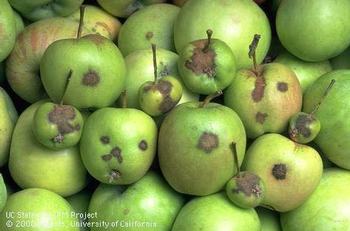
Integrated Pest Management
-
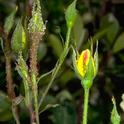
Tap the power of beneficials for greener gardening
One of the most maddening gardening tasks is pest control. Discovering roses covered in aphids, Swiss chard with more holes than Swiss cheese, or grotesquely distorted citrus leaves may have gardeners feeling all bugs are bad. The opposite is true,...
-
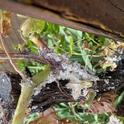
Candle wax on grapevine?
Ever see a white, cottony looking, waxy mess on the trunk of your grapevines? And other locations? No, it's not candle wax. This sticky, cottony mess is the secretion of a waxy material by vine mealybugs. These vine mealybugs are similar to the...
Successful IPM begins with correct identification of the pest. Only then can a selection of appropriate IPM methods and materials be made.
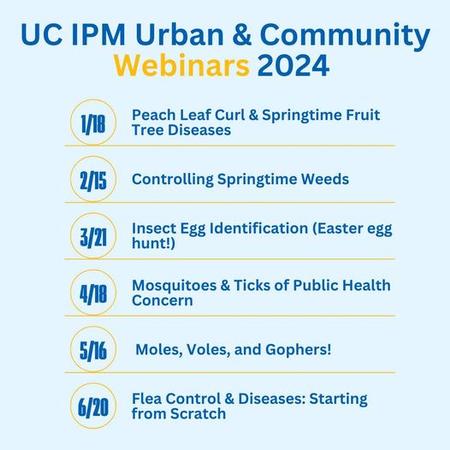
Quick Tip Cards
Quick Tip cards may be accessed at UC IPM Online. Choose from Ants, Aphids, Fleas, Spider Mites, Powdery Mildew, Pesticides: Safe and Effective Use in the Home and Landscape, Garden Chemicals: Safe Use and Disposal and more.
Candle Wax On Grapevine?
Author: Richard Hardwick
Author: Barbara Miller

Ever see a white, cottony looking, waxy mess on the trunk of your grapevines? And other locations? No, it’s not candle wax.
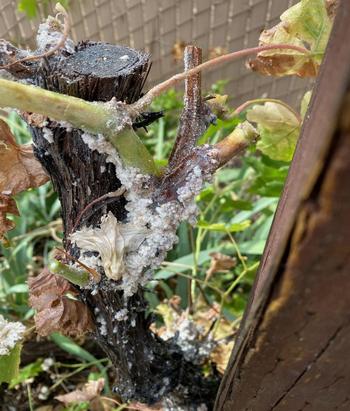
This sticky, cottony mess is the secretion of a waxy material by grapevine mealybugs. Yes, these vine mealybugs are similar to the mealybugs that sometimes affect your indoor and outdoor house plants. Mealybugs belong to the Class Insecta, Family Pseudcoccidae. The species scientific name for the vine mealybug is Planococcus ficus.
When you look closely at the above photo, you will see several white/gray wax-covered adult mealybugs along with the wax they leave on themselves, leaves, stems, trunks and fruit on grapevines. The mealybugs also excrete a sticky honeydew which sometimes causes black sooty mold to grow on top of the honey dew. This honeydew will attract ants. In the pictures above and below, the mealybugs were on the trunk of a grape vine with honeydew dripping onto the surrounding iris and hollyhock garden.
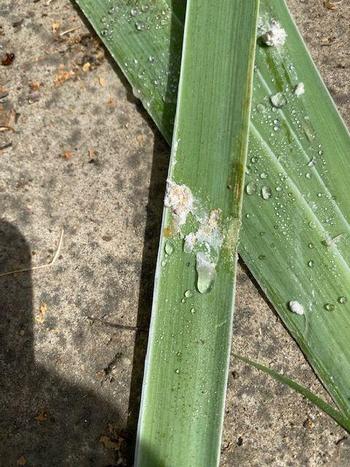
Here are three resources that will provide you with guidance on dealing with mealybugs:
Vine Mealybug / Grape / Agriculture for the various biological and cultural control methods to reduce the problems the vine mealybugs will cause.
Mealybugs Management Guidelines--UC IPM and Identifying Mealybugs - Grape to help identify different species of mealybugs and see their life cycles.
Mealybugs--UC IPM for further information about pests in gardens and landscapes and how to control them. Additional species of mealybugs will infest other plants and can include your outdoor and/or indoor plants.
Friend or Foe? Bee or Fly?
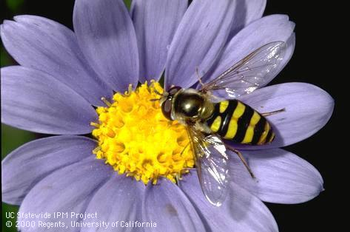

Listen as Millions of Monarch Butterflies Make One of the Rarest Sounds on Earth - Click on link/video below
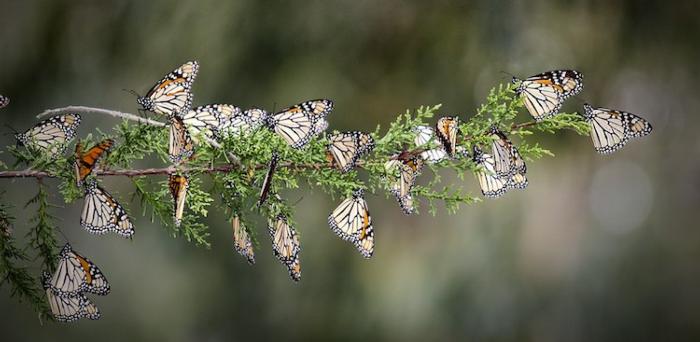
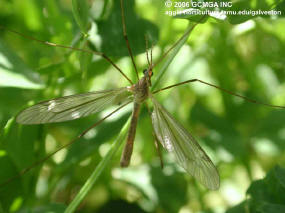

Lace Wing (Class Insecta, Order Neuroptera)
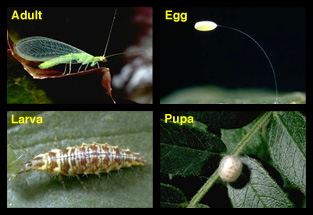
Do not squish the lace wing in any of its life cycle stages. It is a beneficial insect which attacks aphids and other harmful insects. Do not mistake the larva for a harmful "bug." For further information read https://en.wikipedia.org/wiki/Chrysopidae and http://ipm.ucanr.edu/PMG/NE/green_lacewing.html If you click on the 4 individual photos at the IPM.ucanr website, you will see how the eggs are attached to vegetation and see the larva attacking an aphid. But you will have to go to the IPM.ucanr website to see these activities.
The Bees Are Swarming.
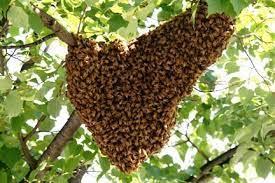
It was brought to our attention by MG Barbara Miller that honey bees have started to swarm. She had a swarm enter her yard recently. Swarming is a natural process in the life of a honey bee colony. Swarming occurs when a large group of honey bees leaves an established colony and flies off to establish a new colony, essentially creating two from one. Swarming is a natural method of propagation that occurs in response to crowding within the colony. Swarming usually occurs in late spring and early summer and begins in the warmer hours of the day. Swarming is common and not dangerous.
For more information, please see http://ipm.ucanr.edu/IPMPROJECT/2012/honey-bees_2012.html
Aphids
The Aphids are back. Class Insecta, Order Hemiptera
Aphids seem to find their way into every garden. They are small, soft-bodied insects that feed by sucking the nutrient-rich liquids out of plants. In large numbers, they can weaken plants significantly, harming flowers and fruit. Aphids multiply quickly, so it’s important to get them under control before reproduction starts. Many generations can occur in one season.
Are Foggers Effective?
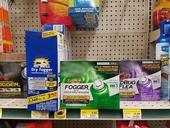
Improper Use Can Cause Injuries
Fogger labels list the size of the space they are intended to treat but according to the Center for Disease Control (CDC), overuse of foggers is common. Not only does overuse increase insecticide residue and exposure risk in the area, but the propellent used in foggers is flammable! Explosions can occur if pilot lights are not extinguished before use as instructed by the label.
For Safety, Follow the Label!
Baby It's Cold Outside
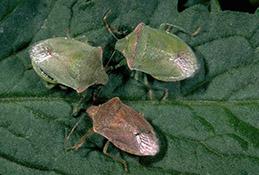
Watch for these intruders trying to come into your warm house from your garden.
To identify and eradicate this harmful insect, see
http://ipm.ucanr.edu/PMG/GARDEN/VEGES/PESTS/stinkbug.html
https://en.wikipedia.org/wiki/Brown_marmorated_stink_bug
https://en.wikipedia.org/wiki/Pentatomidae
Healthier Environment

Healthier Environment/click to learn more
